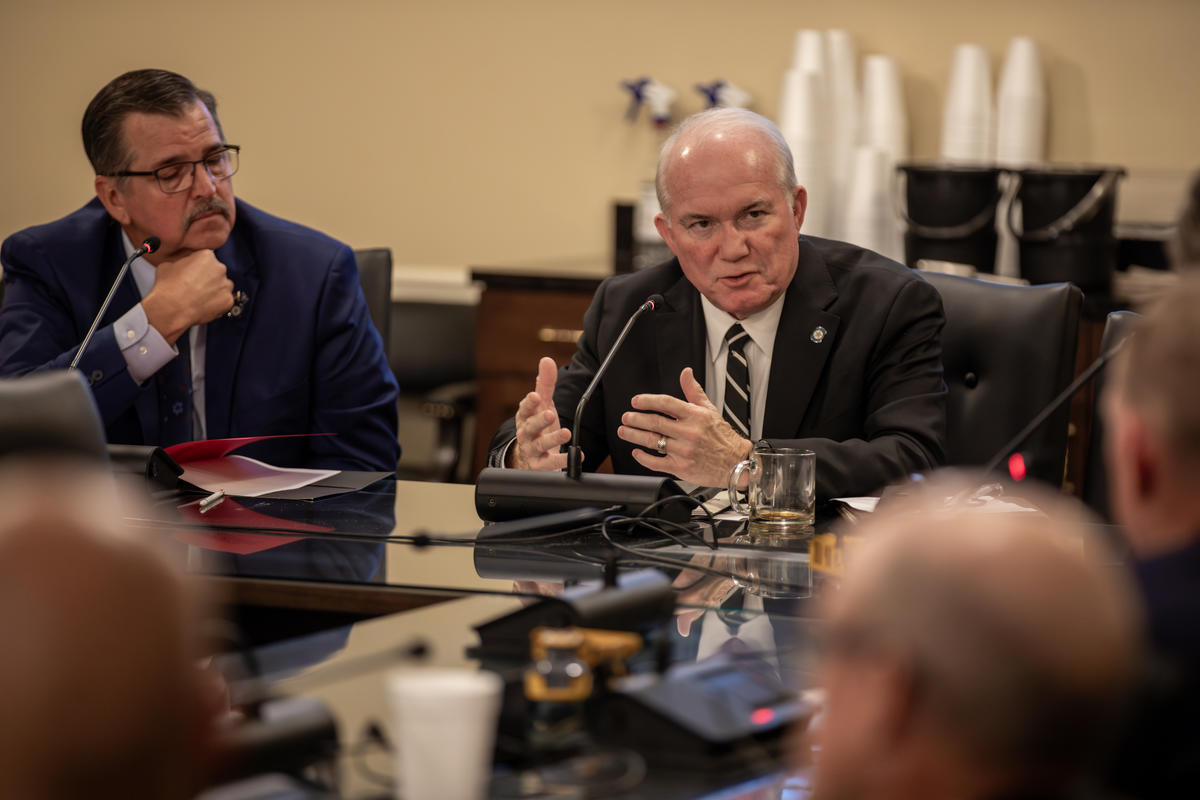Haste joins conversation on challenges facing transportation industry
 Senate Aeronautics & Transportation Chair John Haste addresses the House Transportation Committee during an interim study Tuesday on challenges facing the transportation industry beside committee chair Rep. Ronny Johns.
Senate Aeronautics & Transportation Chair John Haste addresses the House Transportation Committee during an interim study Tuesday on challenges facing the transportation industry beside committee chair Rep. Ronny Johns.
OKLAHOMA CITY – Chairman of the Senate Aeronautics & Transportation Committee and General Government & Transportation Appropriations Subcommittee John Haste, R-Broken Arrow, joined his House colleagues Tuesday for an interim study to examine the challenges facing the state’s transportation, construction and engineering industries. Legislators heard from Transportation Secretary Tim Gatz, along with various associations, organizations and businesses that provide products and services to the Oklahoma Department of Transportation for the state’s roads and bridges.
“Like Oklahoma families, our state’s manufacturing and construction industries are suffering under the weight of historic inflation that is putting a tremendous financial strain on them,” Haste said. “This study gave us insight into the unpredictability of bidding long-term transportation projects, and the struggles companies are also having to find and retain reliable, skilled employees. Just as we’re seeing in other industries, those servicing our transportation system are in desperate need of solutions to fill their worker pipeline in the coming years.”
Other presenters included the President/CEO of the American Council of Engineering Companies (ACEC) Mike Thompson; President of the Oklahoma Engineering Foundation and Region Leader of Olsson Engineering Jimmy Sparks; the Executive Director of the Oklahoma Association of General Contractors (AGC) Bobby Stem; Ken Wert with Haskell Lemon Construction; Kyle Conaway with Sherwood Construction; Tim Duit with Duit Construction; Chief Economist of AGC of America Ken Simonson; and Executive Director of the Oklahoma Cooperative Circuit Engineering Districts Board (OCCEDB) Randy Robinson.
Gatz explained that Oklahoma’s highway system is the state’s largest publicly owned asset at more than $60 billion but currently has a $20 billion backlog of needs, including among others, 45 structurally deficient bridges; 1,100 at-risk bridges; around 14,000 lane miles of pavement; and 5,200 miles of rural two-lanes without safety shoulders. As an example of the magnitude of their financial needs, Gatz noted that currently in the state’s $8.7 billion 8-year Construction Work Plan all 45 structurally deficient bridges and half of the at-risk ones are included, but the remaining bridges are in the backlog. With current resources, he said they won’t be able to get to the remaining bridges within the next 16 years.
Presenters shared how their various industries are facing ongoing workforce shortages that will be further magnified when Baby Boomers start retiring in the next decade. They acknowledged that more work must be done to raise awareness in high schools and colleges of available civil engineering and other transportation and construction careers, while also helping support the state’s efforts to promote STEM education and programs. The committee also heard about the challenges faced by companies trying to bid long-term construction projects in the midst of record inflation and unpredictable and escalating costs of fuel and other commodities.
“I appreciate everyone’s testimony on the many difficulties being faced by these industries and the recommendations and ideas of how we can better address those problems moving forward, including helping students better understand the incredible career opportunities available in these industries,” Haste said.
Sen. Haste: (405) 521-5602 or John.Haste@oksenate.gov
 Oklahoma Senate
Oklahoma Senate

